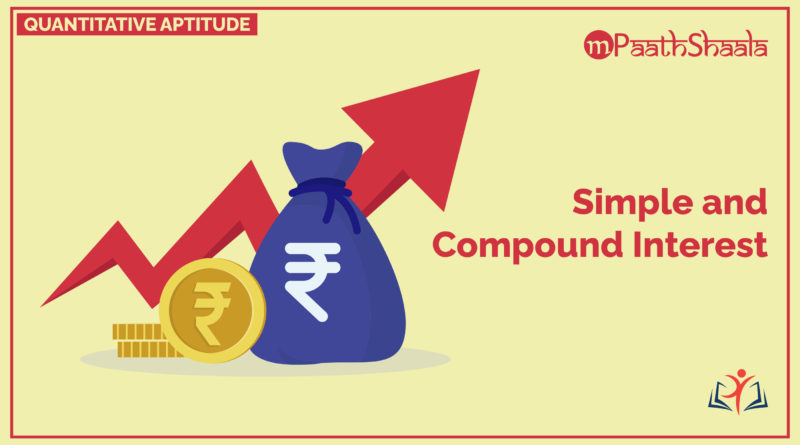Simple and Compound Interest
The additional sum paid by the borrower to the lender for using his money for a specific time period is known as Interest.
The money borrowed (lent or invested) is called Principal.
The rate at which the interest is calculated is called Rate of Interest.
The total money paid by the borrower to the lender is called Amount. Thus,
Amount = Principal + Interest
Simple Interest

where,
SI → Simple Interest
P → Principal on which interest is calculated
R → Rate of interest
T → Time
and Amount is
If a certain sum becomes n times in t years, then rate r is

If, a sum of money at r1 % rate becomes n1 times of itself in a certain time and becomes n2 times of itself at r2 % rate in the same period of time, then

Compound Interest
Compound interest is interest calculated on the initial principal and also on the accumulated interest of previous periods of a deposit or loan.
Amount for compound interest are calculated by the following formulae
I. When interest is compounded annually

II. When interest is compounded half-yearly

III. When interest is compounded quarterly

IV. When interest is compounded annually but the time is in fraction, say ![]() years
years

V. Present worth of x due n years, is given by

Important Formulae
If D is the difference between the CI and SI on a sum P at the rate of r %, then
1. When time is 2 years

2. When time is 3 years

If SI is the simple interest and CI is the compound interest on a certain sum P at the rate r % per annum for a time of 2 years, then the difference D between CI and SI is

Problem Solving Tips
- For counting the time between two given dates, only one of the two dates is counted
(either first or last). Usually, we exclude the date of start and include the date of return. - For converting the time in days into years, always divide by 365, whether it is a leap year
or not. - The time must be taken in accordance with the interest rate percent. Thus, if the interest rate is per month then time must be taken in months.




